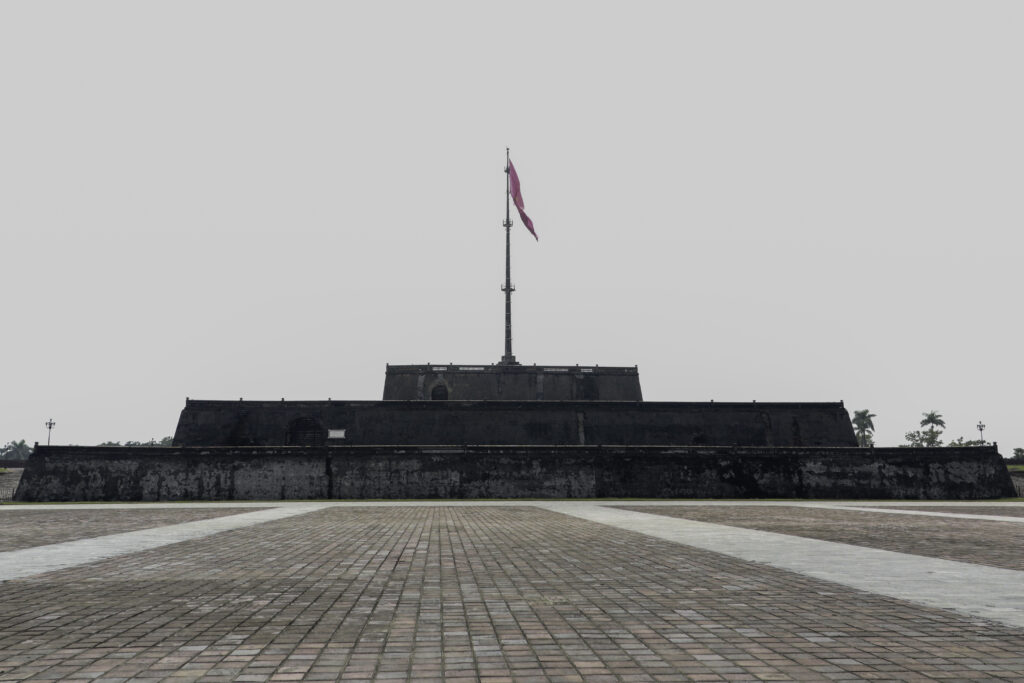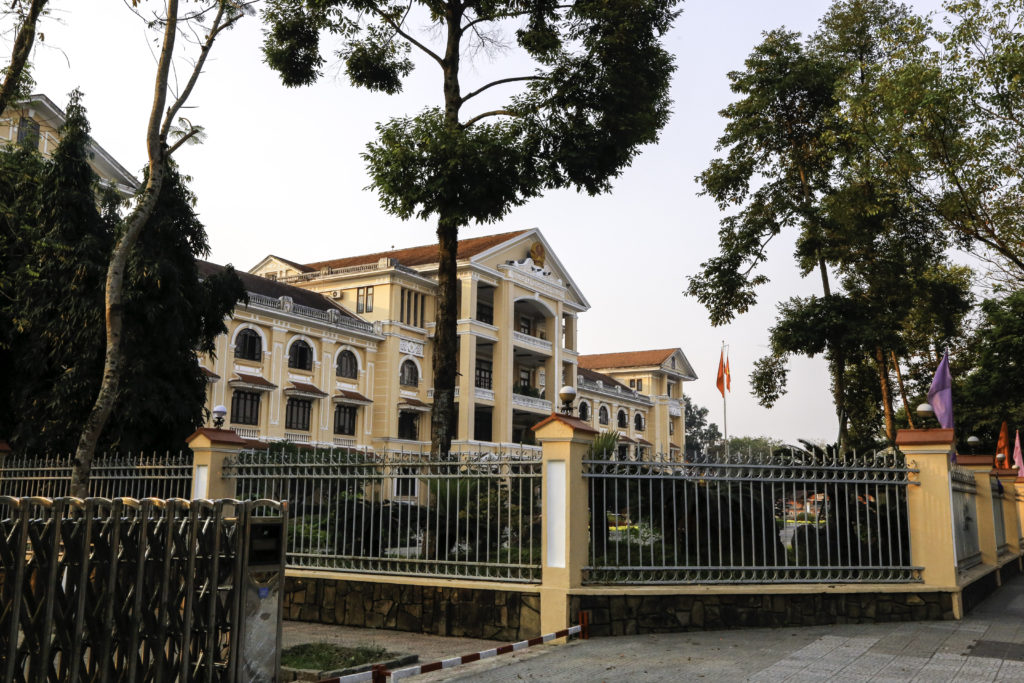Hue Tet Offensive 1968 and city tour

The imperial city of Hue has for centuries played a significant role in Vietnam. Where emperors lived and died. This was the seat of the Nguyen dynasty. Hue’s university has for centuries played an important role in Vietnam. Hue’s history stretches back all the way to the seventeenth century so history is always present for those visiting, regardless whether it is the imperial intrigues of the nineteenth century or the wars of the twentieth century.

Today the university still plays an important part in the city which has become a major tourist destination. The tourist areas now offer walking streets during the weekends and a large selection of restaurants. For those more interested in a more authentic culinary experience, there are lots of local restaurants available only a few minutes walk from the tourist area and also across the bridge inside the citadel.
Most hotels are located around the tourist areas, these are mainly smaller family and backpacker hotels. Larger four and five star hotels are also available along the river and down the Hung Vuong street. Overall the city nowadays offers a complete package also for the fastidious and well traveled visitors that are traveling to Vietnam today.
During the Vietnam War, Hue made its mark in history with the Tet offensive 1968 when the city was taken over by PAVN forces and occupied for almost a month. Through meticulous planning and a disciplined execution, North Vietnamese forces guided by local VC were able to infiltrate the city during the night of Tet celebrations practically undetected. They came in large numbers, it is estimated that almost ten thousand PAVN troops took part in the attack on the city and the following occupation that lasted for weeks.

The infiltration of the citadel was mainly done through the gates along the western wall. The part of town where the university is located, south of the Perfume River, was infiltrated from west, south and east. The main targets were the provincial headquarters, the nearby prison, the post office, the treasury building and the US MACV Compound. Also the university that were spread out across a large number of buildings along the south river bank was occupied.

Inside the citadel, heavy fighting broke out around the Tay Loc airfield and the Mang Ca ARVN camp in the north east corner. As ARVN forces at the airfield managed to retreat back to the base area, they barricaded themselves there and survived multiple fierce attacks from the PAVN forces. It took them several days before they could start mounting attacks against PAVN positions in the citadel and even then they couldn’t take on the PAVN positions in the central densly populated areas.

The MACV Compound was manned by almost four hundred men that managed to hold back the enemy’s attacks during those crucial first hours of the offensive. As the situation started to become clear for the Marine commanders at the Phu Bai airport, they sent reinforcements up along the QL1 to relieve the forces at the MACV Compound. As they moved north along the causeway and came closer to town, the Marines encountered heavy resistance and had to fight their way the last few kilometers up to Tran Cao Van street and the compound.

As the Marines had set up a defence around the MACV compound and the situation started to stabilize, a small LZ could be opened on the river bank by the Truong Tien bridge where wounded could be flown out by choppers. Although under almost constant enemy fire, this became the main gateway for the Marines and MACV staff to evacuate wounded as well as receive replacements, ammunition and supplies. The commanders at Phu Bai also thought it would be a good idea to send troops across the bridge in order to fight their way through to the Mang Ca ARVN camp in the citadel. This turned out to be a fatal decision.

Captain Meadows and his Golf Company set out across the Truong Tien bridge, they met heavy resistance even before they managed to reach the northern bank. Many Marines fell already during the first minutes of the action. Even more were cut down by sniper fire as they fought their way west along Tran Hung Dao street and turned right towards the Thuong Tu citadel gate before they had to turn back under dramatic circumstances. The Truong Tien bridge still carries scars from the fighting as does the Thuong Tu gate and the surrounding walls.

Realizing that clearing the south side of the river was needed in order to mount an attack on the citadel, the first efforts were made to start clearing the way to the west. The Marines started out down the the Tran Cao Van and Truong Dinh streets. From the MACV compound, the Marines fought from house to house, clearing block after block until they reached the provincial headquarters some 800 meters south west where they famously raised the American flag.

History comes alive as we walk in the footsteps of the Marines, passing by the old post office and treasury building on Hoang Hoa Tham street with the Saigon Morin hotel which used to be a part of the university on our right, then further past the hospital and the old prison areas before we reach the provincial headquarters. The Marines used the Saigon Morin hotel building as a command post during the battle and among other things they set up mortars in the courtyard. You will see what the US Marines saw as they fought their way house by house.

As the Marines had clear the area west of the MACV compound they started to clear the rest of ”The Triangle” south of the river. Eventually they had to cross the bridge again and start fighting their way through the citadel. The marines joined the ARVN forces in the Mang Ca compound and started to fight their way south from there. The Front forces had set up a strong defense and the Marines faced vicious defense for every house and block they took. After days they would finally take the Dong Ba gate on the south east wall as well as the Thuong Thu gate on the south wall before they could turn their focus west.

Fighting inside the citadel was very rough and tight. Soldiers on both sides and civilians lost their lives and buildings were flattened as the Front soldiers refused to give up ground. After more than four weeks of fighting the ARVN forces could finally storm the royal palace, left were only a few Front soldiers that were left behind to cover the retreat of their compatriots. For those interested in doing a full day tour centered around the 1968 Tet fighting in Hue we recommend to contact Mr Vu at Annam Tour who we ourselves have used frequently. We promise you will get unique insight in to one of the most famous battles of the Vietnam War.

Although it was more or less completely destroyed, a visit to the Hue Citadel is sure to be the main activity for visitors coming to Hue. There is still lots to see and nowadays some of the old temples and royal buildings are being built up again. We do recommend a half day visit to the citadel and to use a proper guide that will take you around. You will find, or guides will find you, around the entrance area to the citadel.

Read more about the surroundings of Hue: Bunker Hill just outside of town.
JT
How to get there
Hue is located about 100 kilometers north of Da Nang over The Hai Van Pass along the main road QL1. One can fly in to Phu Bai airport from all the major cities in the country or go by road from Da Nang and Dong Ha. We recommend those interested in exploring the DMZ to stay here instead of Dong Ha as there is a wide range of hotels and restaurants available and most of the tour operators have offices here.
Back to I Corps >>>
Hello. I’m interested in doing a tour of Hue with Mr Vu
Hello Patrick
You can contact him on annamtour@gmail.com
Enhoy your trip. Let me know if you have any questions.
/Jonas
Founder of namwartravel.com